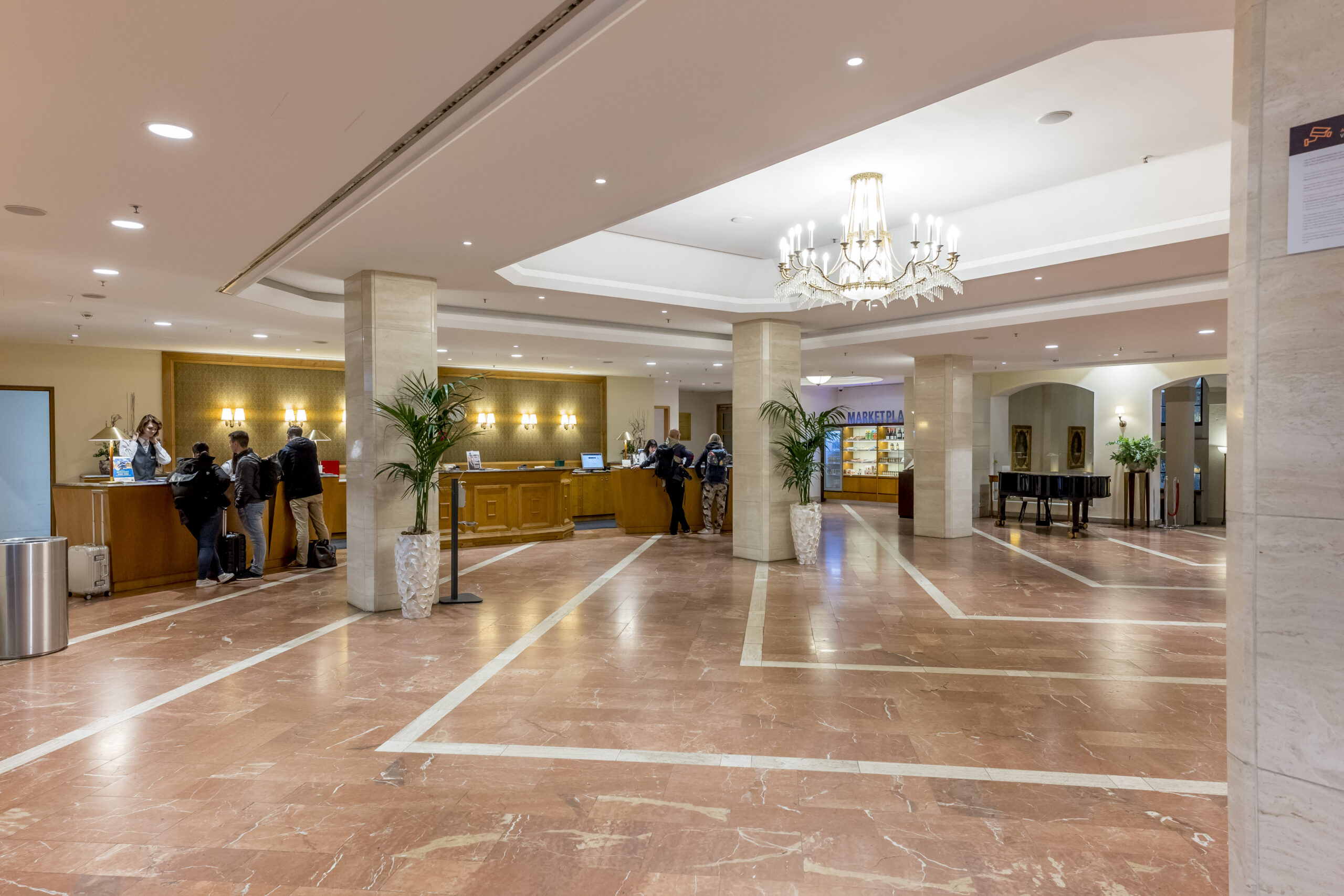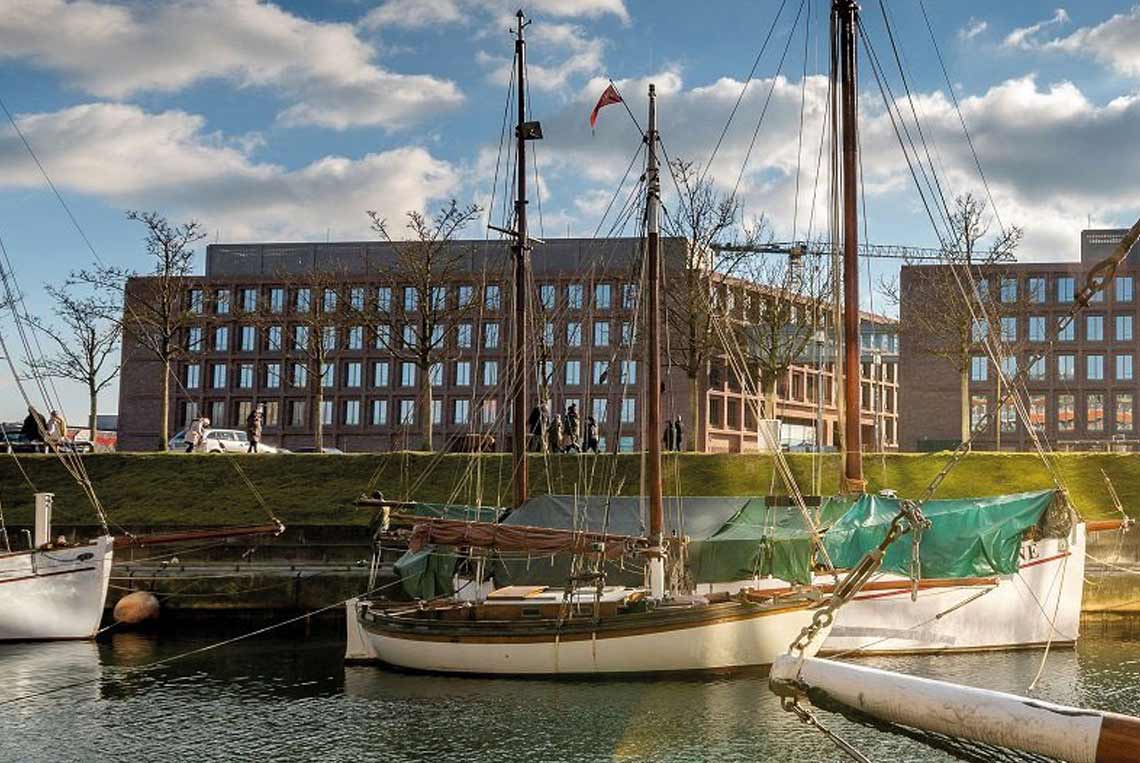Key to greater efficiency
Issue 01-2015:
read all articles online
read as pdf
Smart buildings significantly reduce energy consumption. Thus, it is truly smart for all the technical components to be intelligently networked. Lanfer Automation GmbH, based in Borken, Germany, accomplishes this using WAGO controllers. The result is not just energy savings, it also opens up energy synergies.
Alfred Lanfer scans a QR code on a conference room’s door with his smartphone in order to prepare for the next meeting. With just one finger swipe on a tiny screen, the blinds lower, the lights dim and a projector and screen descend from the ceiling. “This is the presentation function that we were able to realize with just one switch by using EnOcean technology,” explains the CEO of Lanfer Automation GmbH. The company completely renovated its headquarters in late 2013, in which the building was equipped with innovative automation technology – from cellar to ceiling – and targeted energy efficiency.
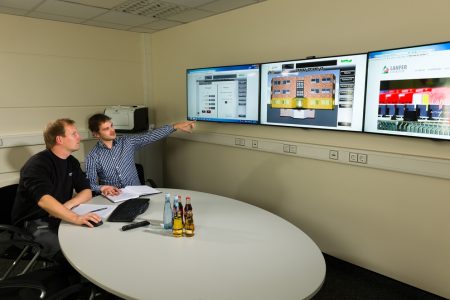
Efficiency central: all building systems and devices can be measured and controlled using proprietary software.
Linking intelligent islands
Whether it’s heaters, air-conditioning technology or illumination, Lanfer says each system presents good opportunities for adding intelligence to buildings and for using energy as efficiently as possible. However, since these individual building sectors in their traditional forms do not have overlapping technology and combined installations, the end result is not always optimal. “A typical example is when the heating and cooling systems work against each other. It is too warm, so the air conditioning system automatically switches on; however, the heating does not switch off at the same time,” explains Lanfer. An integrated concept would prevent this.
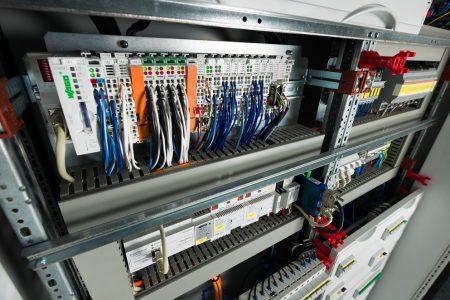
Flexible core: modular WAGO-I/O-SYSTEM 750 components ensure that the different technical systems in a building can understand each other.
Getting a grip on interface problems
In order to harmonize the different systems from the individual building technology sectors, each floor received its own control unit. And at the core of each case is a modular WAGO-I/O-SYSTEM 750. “In the end, the customer should benefit from the intelligence of the individual technologies and not have to grapple with interface problems. This can be done,” states Lanfer, “using the open and extremely flexible WAGO controllers”. With the WAGO controller, there is basically only one ETHERNET interface. It functions centrally for all data and ensures that the building’s technical components work together. For this purpose, the I/O modules collect information belonging to the different bus systems from the individual building sectors, such as from DALI for illumination control and from KNX for the climate system. SMI is similarly integrated for outside shading, as are EnOcean wireless touch switches and many others.
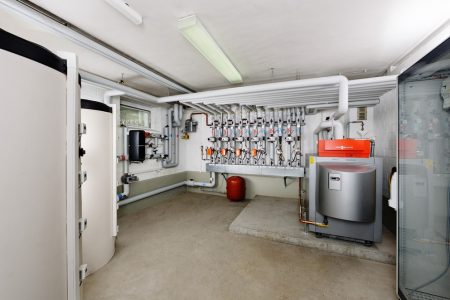
The heating system in the basement of the Lanfer Automation headquarters in Borken, Germany, is coupled to the airconditioning system to provide intelligent heat.
Future functionalities
Lanfer Automation continues to evolve the system. Most recently, sensors were installed in a few rooms to measure the CO2 content in the air. In the meantime, Lanfer is thinking a step ahead and he shares that, “It is conceivable for us to detect and improve not only the current consumption values, but project future energy consumption based on the analysis.” The anticipated result: utilities would make electricity and heat available at reduced rates. And that would be really smart.
New articles in Smart Building
Top articles


